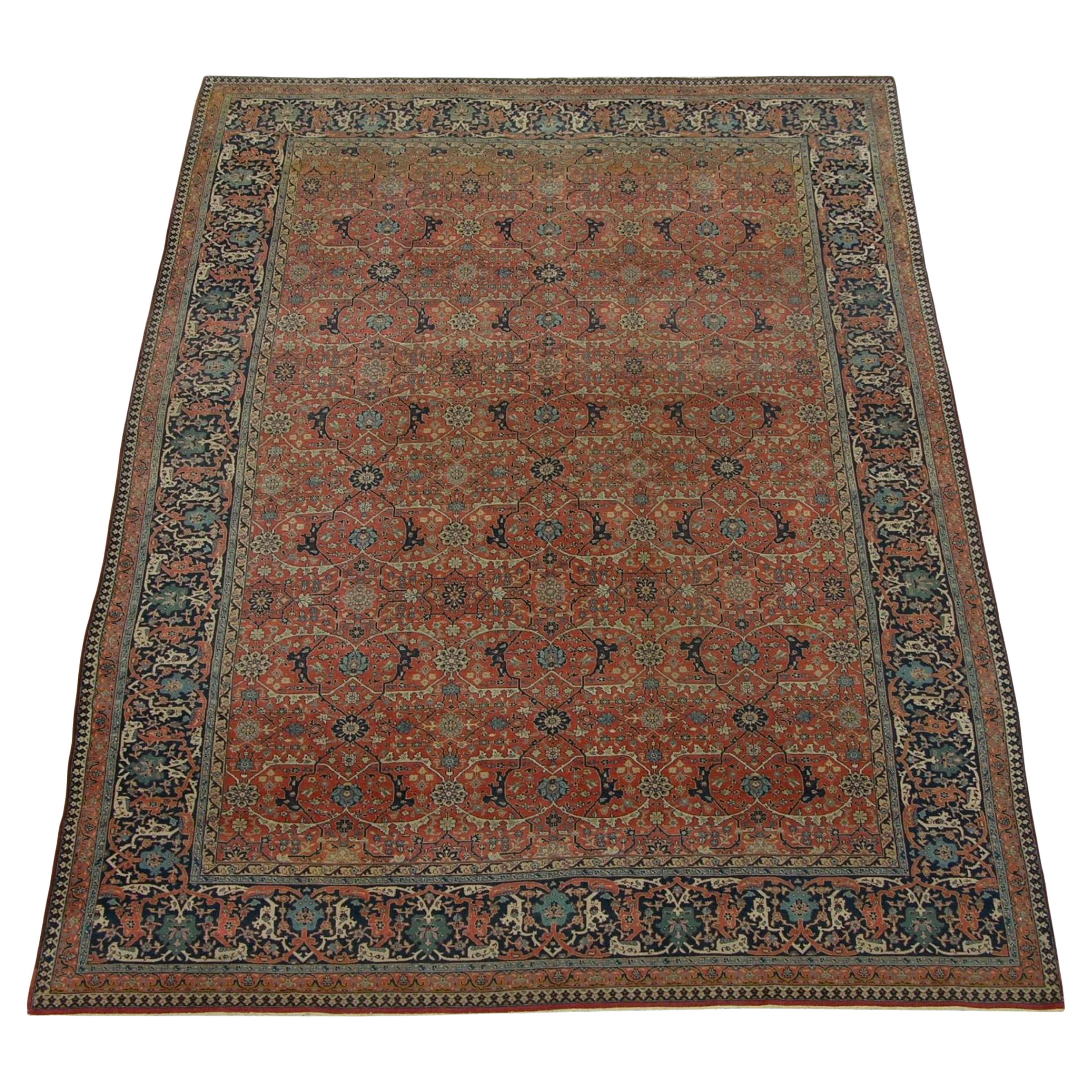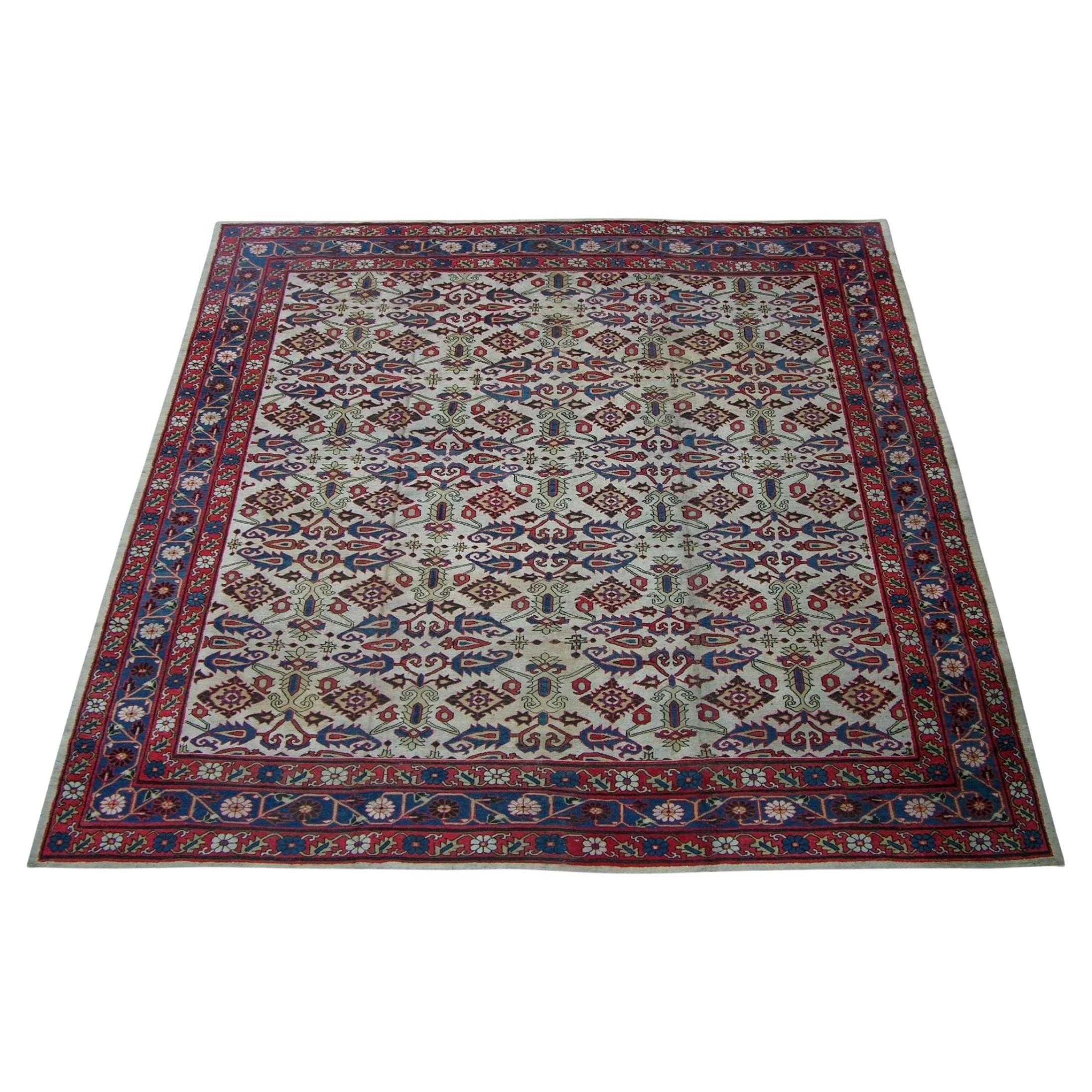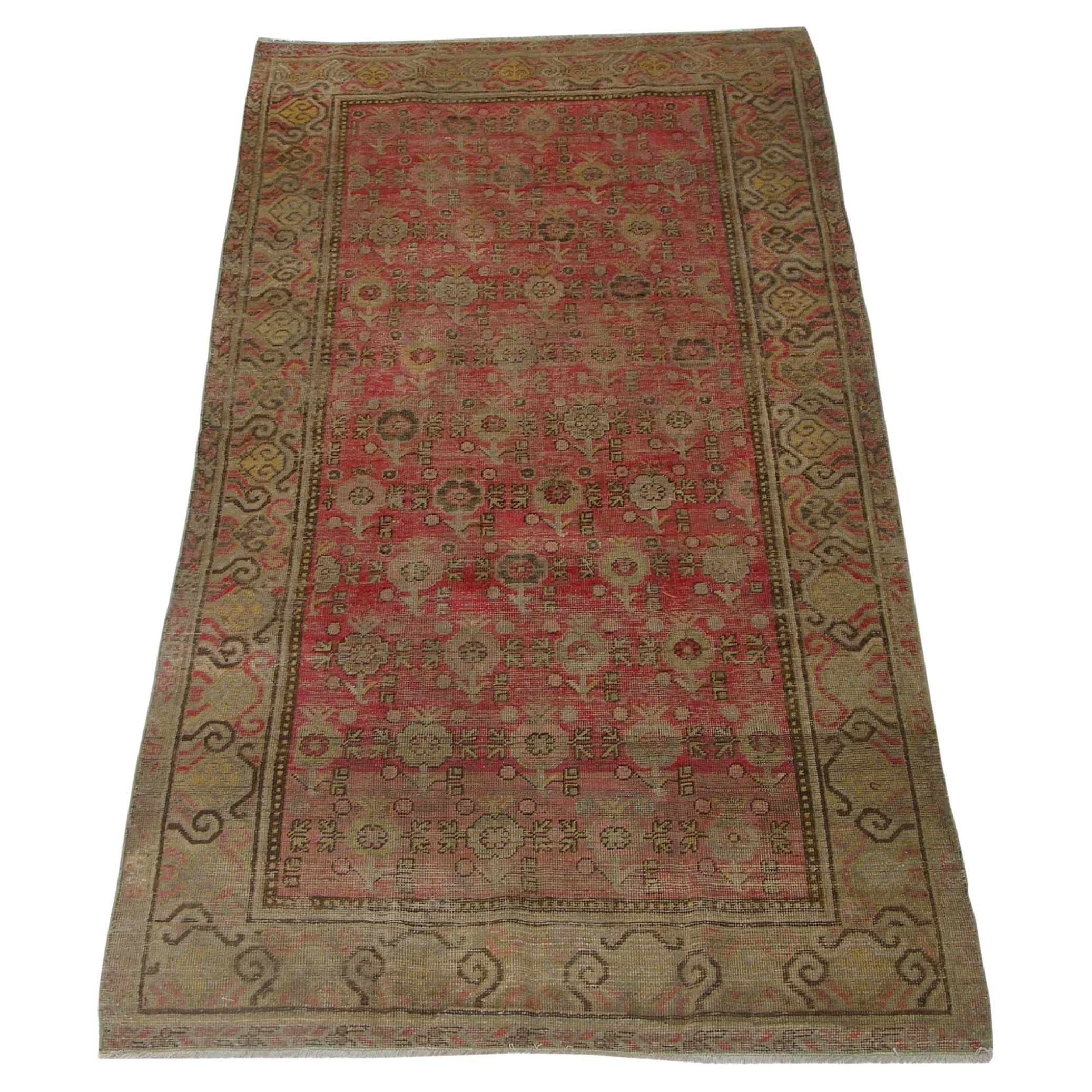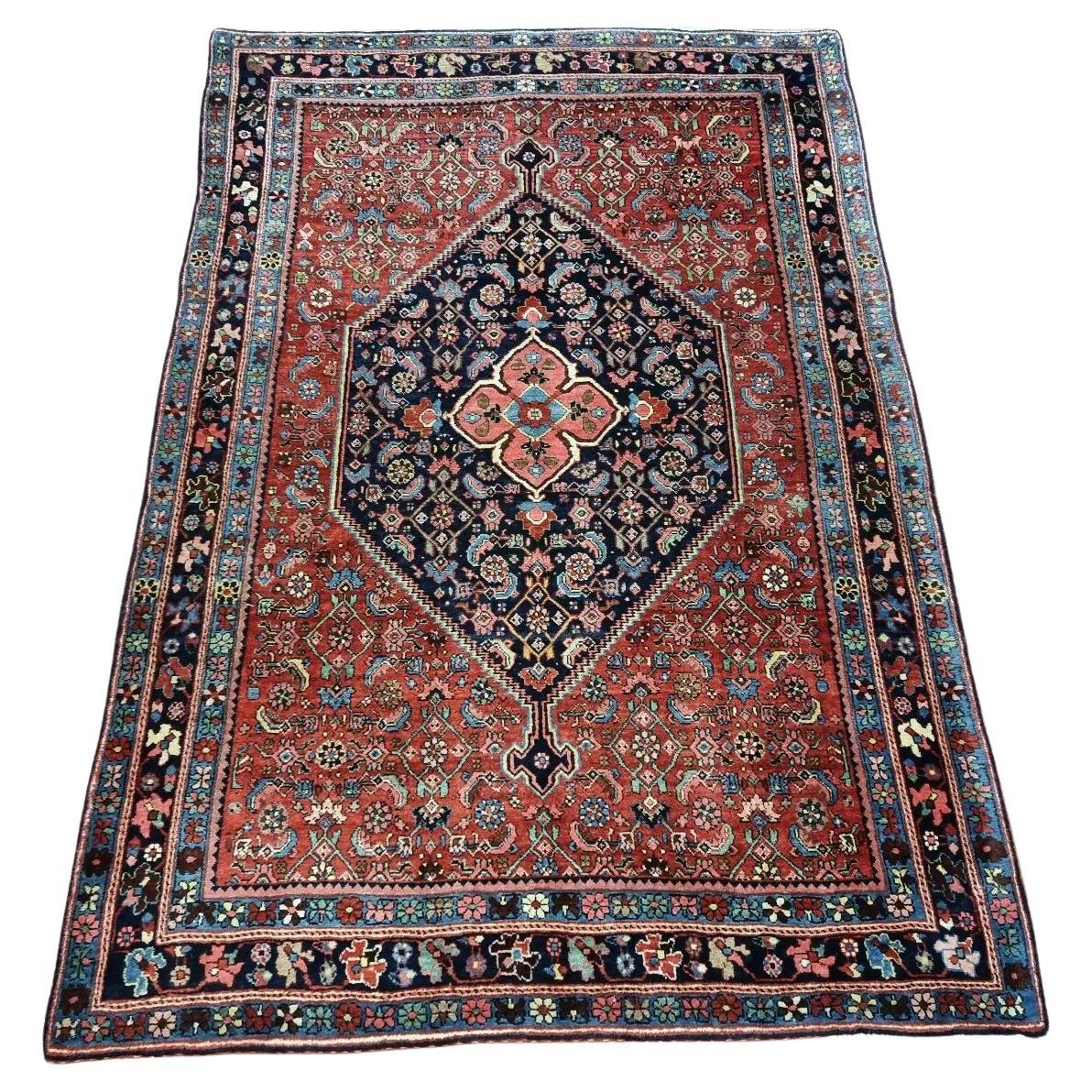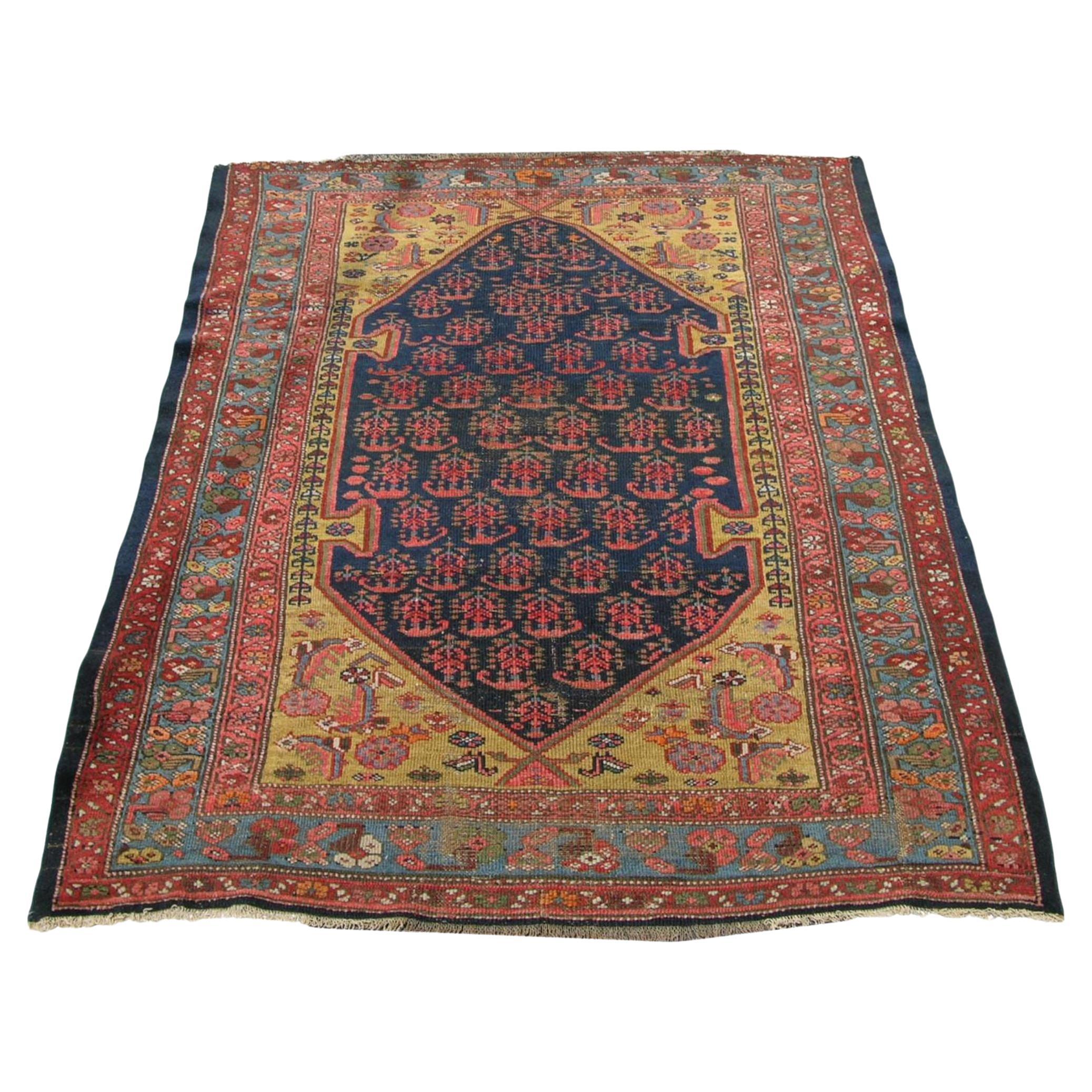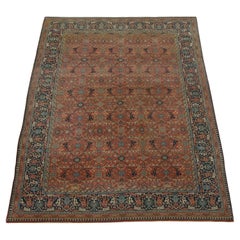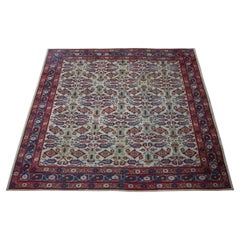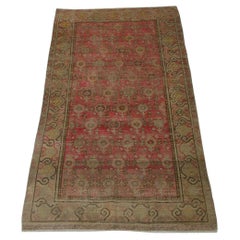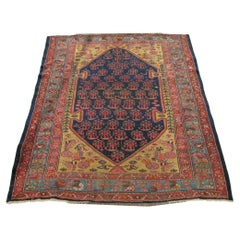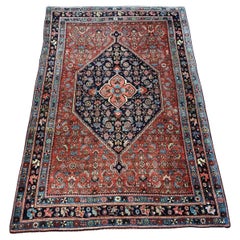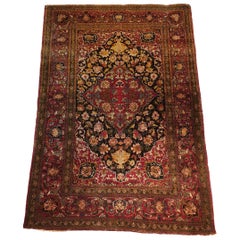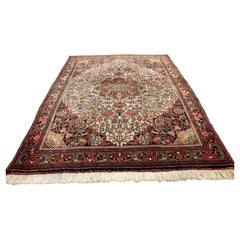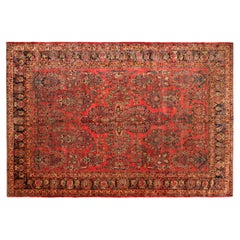Items Similar to Antique Bidjar Rug with Floral Design 17'8''x11'7''
Want more images or videos?
Request additional images or videos from the seller
1 of 5
Antique Bidjar Rug with Floral Design 17'8''x11'7''
$28,499
£21,624.39
€24,725.55
CA$39,805.38
A$44,258.16
CHF 23,109.17
MX$538,729.59
NOK 294,862.94
SEK 276,272.49
DKK 184,531.34
Shipping
Retrieving quote...The 1stDibs Promise:
Authenticity Guarantee,
Money-Back Guarantee,
24-Hour Cancellation
About the Item
Antique Bidjar Rugs Bidjar is a town in Persian Kurdistan located in north-west Persia. The Bidjar name is also used to describe the antique rugs that were produced in the many villages in the surrounding vicinity. The Bidjar is noted as being the stiffest carpet made; they are very heavy in relation to their size, and very thick and durable. All of the knots are symmetrical and the rows are beaten down during the weaving process producing a dense compact fabric. Given their thickness and construction Bidjar rugs can be difficult to fold. The many designs depict the Kurdish influence of the area and often floral and classical geometric motifs are employed as well as the use of large, whimsical medallion designs. The color palate is rich and jewel toned making the Bidjar a highly desirable rug sought after by designers.
Bidjar rugs, produced in Northwest Iran are among the finest of Persian rugs by virtue of their design and technique. They cannot be identified readily by their patterns, for their repertoire is quite rich and varied. They are distinguished by primarily by their weave, which is perhaps the densest and most durable of all oriental rugs. Bidjar carpets were produced in a classical medallion format as well as in allover designs and pictorial or garden patterns. The quality of their wool is lustrous and soft, the drawing at times classically precise or wildly tribal. Some are attributable to Kurdish weavers living in the Bijar region.
Known for producing some of the most important Persian rugs, rug weavers in Bidjar have perfected a style of rug weaving that results in what are called “Iron Rugs.” Bidder weavers are also responsible for the so-called “Man’s Rug.”
The city of Bidjar is located in the province of Kurdistan in the heart of Northwest Iran. Bidjar lies between the city of Senneh or Sanandaj to the south and the legendary weaving center of Tabriz to the north. Kurdish tribes have traditionally been the region’s endemic people. However, the Afshari tribe also produced many Bidjar’s workshop rugs using patterns borrowed from Heriz, Tabriz and other great weaving centers of Northwest Persia.
Geography plays a tremendous role in the history of the production of antique rugs from Bidjar. Although the Kurdish tribes have always been a dominant group in the region, they are one of the few cultures in the world who have never had their own country.
Bidjar’s carpet weaving traditions were formed through a combination of cultural isolation and assimilation that is evidenced in the diverse range of designs used in the region as well as the continued use of natural dyes throughout the 1920s when many other regions adopted modern methods. The rugs of Bidjar encompass a broad range of styles and patterns that makes them difficult to define or distinguish from other regions.
Although Bidjar was first mentioned in the 1500’s when the region was annexed with Armenia by Safavid forces, archaeological evidence of domestic technology and weaving implements dating back approximately 10,000 years has been found throughout Kurdistan.
Situated in a corridor between the border of Persia, Anatolia and the Caucasus, Bidjar has been at the mercy of invading cultures for thousands of years. Military invasions from Russia and Europe have influenced Kurdish culture as early as 500 BC when Cyrus the Great launched a large-scale incursion into the region.
The turmoil across Northwest Persia and neighboring countries continued through the 1800s with ongoing fighting related to the Russo-Turkish War.
Over the centuries, Kurdish influence has waxed and waned as neighboring empires were distracted with their own wars. At the height of Kurdish power, the group claimed parts of neighboring Turkey and Azerbaijan. However, the Kurdish people had almost always been a subordinate tribal group that was part of a larger empire.
The city’s untimely establishment on the world’s maps coincided with the re-establishment of shipping ports and the gradual decline of the Silk Road. This shift changed the course of events in Bidjar and allowed the city to maintain its weaving traditions into the early 20th century.
Influences from Persia, Russia and the Caucasus can be seen in Bidjar’s diverse rugs, which include European roses, curvilinear arabesques, inset-lozenges featuring intricate Herati and Mina-Khani patterns, and Serapi-style medallions set on a stark background. The designs used on Bidjar rugs often include sophisticated patterns with small details that highlight their origin in the village workshops of tribal weavers.
Examples of weavings from Bidjar include small-format rugs as well as long corridor carpets. However, large-format pieces are relatively rare. Rugs from Bidjar are known for their durable construction and strong, raised pile. Weavers in Bidjar used double weft or double knot construction along with a number of implements to create an extremely firm pile using the symmetric Turkish or Ghiordes knot.
A small number of Bidjar rugs were also produced using the asymmetric Persian knot along with traditional curvilinear patterns from Persia. Goat hair is another fiber that is occasionally seen in rugs from the region. Weavers in Bidjar used a unique combination of yarns for the weft to create the signature look and feel of the firm pile. First, a dampened shoot of thick weft is inserted and tamped down with tools to secure the knots. The weaver follows this with a second shoot of finer yarn to secure the entire row in place.
Wool is the most common foundation found in antique Bidjar rugs. However, cotton was also used. Many of the oldest Bidjar rugs are extremely coarse and incapable of being folded while later pieces and rugs produced in the neighboring village of Halvai tend to be thinner and finer.
Rugs signed by the legendary master weaver Tajhavi (Taghavi) are among the finest and most prized carpets from the Kurdistan province displaying impeccable workmanship. Bidjar is a small city in a sparsely populated province with a rich carpet weaving tradition. The resulting pieces are as diverse as the groups who first created them and their varied designs make antique Bidjar rugs equally fitting for traditional and modern interiors.
- Dimensions:Width: 139 in (353.06 cm)Length: 214 in (543.56 cm)
- Style:Other (In the Style Of)
- Materials and Techniques:
- Place of Origin:
- Period:1900-1909
- Date of Manufacture:1900
- Condition:Great condition.
- Seller Location:Los Angeles, US
- Reference Number:Seller: 4478y1stDibs: LU9020235523622
About the Seller
5.0
Platinum Seller
Premium sellers with a 4.7+ rating and 24-hour response times
Established in 1920
1stDibs seller since 2023
63 sales on 1stDibs
Typical response time: <1 hour
- ShippingRetrieving quote...Shipping from: Los Angeles, US
- Return Policy
Authenticity Guarantee
In the unlikely event there’s an issue with an item’s authenticity, contact us within 1 year for a full refund. DetailsMoney-Back Guarantee
If your item is not as described, is damaged in transit, or does not arrive, contact us within 7 days for a full refund. Details24-Hour Cancellation
You have a 24-hour grace period in which to reconsider your purchase, with no questions asked.Vetted Professional Sellers
Our world-class sellers must adhere to strict standards for service and quality, maintaining the integrity of our listings.Price-Match Guarantee
If you find that a seller listed the same item for a lower price elsewhere, we’ll match it.Trusted Global Delivery
Our best-in-class carrier network provides specialized shipping options worldwide, including custom delivery.More From This Seller
View AllAntique Tabriz Rug Floral Design
Located in Los Angeles, US
Antique Tabriz rugs are distinguished by their excellent weave and by their remarkable adherence to the classical traditions of antique Persian rug design. But they cannot be disting...
Category
Antique Early 1900s Asian Other Russian and Scandinavian Rugs
Materials
Wool, Cotton
Antique Indian Amritsar Rug with Floral Design
Located in Los Angeles, US
Antique Amritsar Rugs – The spectacular rugs of Amritsar capture the exotic style of India while incorporating a subtle colonial influence. This convergence of eastern and western st...
Category
Antique Early 1900s Asian Other Russian and Scandinavian Rugs
Materials
Wool, Cotton
19th Century Floral Style Samarkand Rug
Located in Los Angeles, US
Antique Samarkand Rugs: The desert oasis of Khotan was an important stop on the Silk Road. The people of Khotan were expert carpet weavers who produced high quality antique rugs and ...
Category
Antique 19th Century Other Russian and Scandinavian Rugs
Materials
Wool, Cotton
1900 Antique Zanjan Rug 5'6'' X 4'1''
Located in Los Angeles, US
The city of Zanjan lies in the north-western area of Iran, this ancient city sprung up through salt mining in the area and was an important stop in the Silk Routes of Iran. Zanjan ca...
Category
Antique Early 1900s Asian Other Russian and Scandinavian Rugs
Materials
Wool, Cotton
19th Century Antique Floral Samarkand Rug
Located in Los Angeles, US
Antique Samarkand Rugs: The desert oasis of Khotan was an important stop on the Silk Road. The people of Khotan were expert carpet weavers who produced high quality antique rugs and ...
Category
Antique Early 1900s Other Russian and Scandinavian Rugs
Materials
Wool, Cotton
1900s Antique Mahal Floral Design Rug 11'5''x10'7''
Located in Los Angeles, US
Ca.1900 Antique Mahal Stylish Floral Design 11'5''x10'7''
Category
Antique Early 1900s Unknown Empire Turkish Rugs
Materials
Wool, Cotton
You May Also Like
Handmade Antique Persian Bidjar Rug 3.5' x 5.2' 1910s - 1D178
Located in Bordeaux, FR
This exceptional antique Persian Bidjar rug, hand-knotted circa 1910s, embodies the durability and beauty for which Bidjar rugs are renowned. Featuring a geometric pattern in rust-re...
Category
Vintage 1910s Persian Rugs
Materials
Wool
727, Beautiful Vintage Floral Design Rug
Located in Paris, FR
727, very beautiful midcentury rug with nice floral design, in the style of European savonnerie rugs, and beautiful natural colors, entirely hand knotted with wool velvet on cotton f...
Category
Antique Early 1900s Central Asian Kirman Central Asian Rugs
Materials
Wool
Handmade Vintage Persian Bidjar Rug, 5.4' x 3.3' (165 x 102 cm), 1950s - 1K03
Located in Bordeaux, FR
A magnificent antique Persian Sarouk rug, hand-knotted from fine wool, showcasing a classic Kashan design with intricate floral motifs and rich, harmonious tones. Dating back to the ...
Category
Vintage 1950s German Western European Rugs
Materials
Wool
Vintage Persian Sarouk Oriental Rug, in Room Size, with Intricate Floral Design
Located in New York, NY
Vintage Persian Sarouk Oriental rug, circa 1920, Room size.
A vintage Persian Sarouk oriental rug, size 11'7" x 9'2", circa 1920. This lovely hand-knotted wool rug features an intri...
Category
Vintage 1920s Persian Persian Rugs
Materials
Wool
$5,116 Sale Price
20% Off
Handmade Antique Persian Bidjar Rug 4.3' x 6.7', 1920s - 1N55
Located in Bordeaux, FR
This exquisite handmade antique Persian Bidjar rug from the 1920s is a stunning testament to traditional craftsmanship and timeless design. Measuring 4.3 ft x 6.7 ft (130 cm x 205 cm...
Category
Vintage 1920s Persian Rugs
Materials
Wool
Antique Persian Sarouk Oriental Rug, in Small size, with Intricate Floral Design
Located in New York, NY
Antique Persian Sarouk Oriental Rug, circa 1910, Small size
An antique Persian Sarouk oriental rug, size 4'8" x 3'5", circa 1910. This lovely hand-knotted wool rug features an intri...
Category
Vintage 1910s Persian Persian Rugs
Materials
Wool
$1,916 Sale Price
20% Off
